Overview
In the ever-evolving world of digital marketing, many startup founders face the daunting challenge of staying ahead of trends. As we look toward 2025, it’s clear that the landscape is shifting rapidly, and this can feel overwhelming. The pressure to innovate and connect meaningfully with consumers can weigh heavily on your shoulders. Yet, it’s essential to recognize that you are not alone in this journey.
The rise of artificial intelligence for hyper-personalization is transforming how brands engage with their audiences. This technology allows for tailored experiences that resonate deeply with consumers, fostering a sense of connection. Additionally, user-generated content is becoming increasingly significant, as it reflects authenticity and builds trust. Moreover, the growing impact of short-form video and augmented reality offers exciting opportunities to captivate your audience in new ways.
These trends are not just buzzwords; they represent a path forward for brands striving to connect authentically with consumers. By embracing these innovations, you can drive sales and stand out in an increasingly competitive market. Remember, the key lies in understanding your audience’s needs and creating experiences that speak to them.
As you navigate these changes, consider how RNO1 can support you in implementing these strategies. Together, we can harness the power of technology to create meaningful connections and drive your success. Let’s embark on this journey of growth and innovation together, ensuring that your brand not only survives but thrives in the digital age.
Introduction
In today’s rapidly evolving digital landscape, brands encounter a significant challenge: not only must they capture attention, but they also need to foster genuine connections with their audiences. As we move closer to 2025, it’s essential for businesses to understand the emerging trends in digital marketing. This understanding is crucial for those aiming to thrive in a competitive environment.
This article delves into ten pivotal trends reshaping the industry, including:
- The transformative power of artificial intelligence
- User-generated content
- The rise of hyper-personalization
- Social commerce
With these trends in mind, how can companies adapt their strategies effectively? It’s not just about meeting consumer expectations; it’s about building lasting relationships in an increasingly complex marketplace. Together, we can explore these trends and find ways to navigate this journey with compassion and insight.
RNO1: Transforming Digital Experiences with Innovative Branding Solutions
In today’s fast-paced digital world, many tech startup founders grapple with the challenge of connecting authentically with their audience. This struggle can lead to feelings of frustration and isolation, as the digital landscape becomes increasingly complex. It's not just about having a presence online; it’s about crafting experiences that resonate deeply with modern consumers. RNO1 understands these pain points and is here to help.
RNO1 leads the digital marketing industry trends by creating transformative digital experiences that truly connect with people. Their innovative marketing solutions elevate brand identity while significantly enhancing customer engagement. By employing advanced UX design principles, RNO1 empowers companies to navigate this intricate digital terrain, ensuring they remain relevant and competitive. The emotional weight of striving for authenticity can be overwhelming, but RNO1 offers a guiding hand.
With subscription models like Revolve and Retrn, RNO1 provides ongoing support, allowing companies to adapt and innovate in real-time. This nurturing approach aligns perfectly with the growing trend of personalized promotion, reflecting current digital marketing industry trends, as 94% of marketers believe that tailored experiences foster deeper customer connections. As businesses increasingly prioritize authenticity and minimalism, RNO1’s commitment to delivering impactful digital experiences positions them as a vital partner for organizations aiming to thrive in 2025 and beyond by adapting to digital marketing industry trends. Together, we can navigate these challenges and create meaningful connections that resonate with your audience.
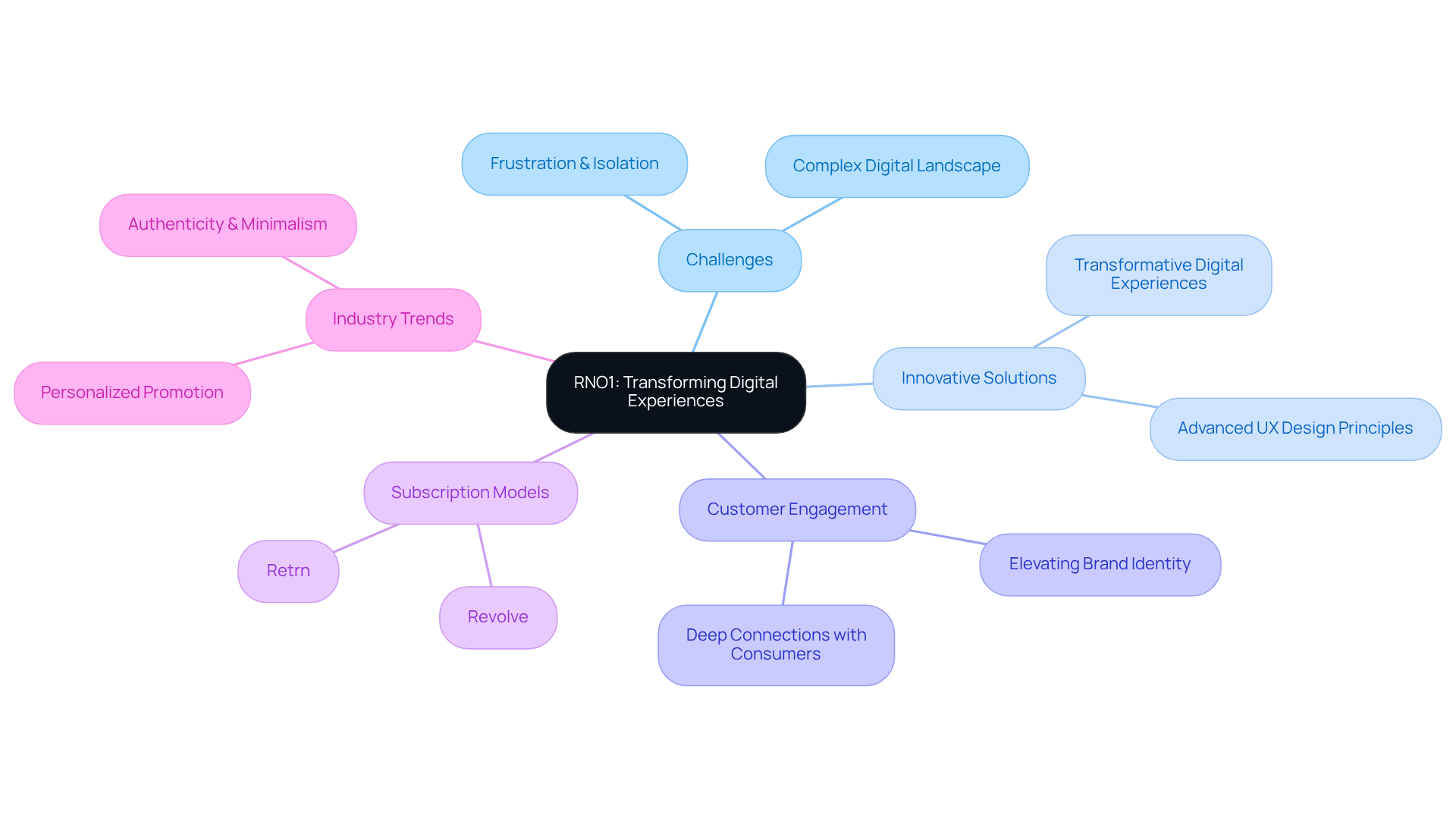
Artificial Intelligence: Revolutionizing Customer Engagement and Personalization
In today's fast-paced world, many brands struggle to connect meaningfully with their consumers. This disconnect can lead to missed opportunities for engagement and loyalty. However, Artificial Intelligence offers a nurturing solution that fundamentally transforms these interactions through hyper-personalization and predictive analytics.
Imagine a scenario where companies can harness AI tools to sift through vast datasets, tailoring promotional messages and product suggestions to fit individual preferences. This thoughtful, personalized approach not only enhances customer engagement but also fosters a sense of care and understanding. In fact, studies reveal that personalized experiences can lead to an astonishing 760% increase in revenue from email campaigns alone.
Moreover, brands that embrace AI-driven strategies find themselves better equipped to anticipate customer needs, nurturing satisfaction and loyalty. As we look toward 2025, integrating AI technology into promotional strategies will be paramount for companies wishing to maintain their competitive edge.
Successful examples abound, showcasing companies that have effectively harnessed AI to create targeted promotions. These initiatives have led to over 50% of consumers expressing a preference for brands that offer personalized experiences. It's clear that the consensus among advertisers is strong: AI personalization not only enriches engagement but also enhances profitability. This makes it an essential element of modern promotional strategies.
As we navigate this evolving landscape, let’s remember the importance of connection and personalization. By leaning into AI, brands can not only meet but exceed the emotional and practical needs of their consumers, fostering a community of loyalty and trust.
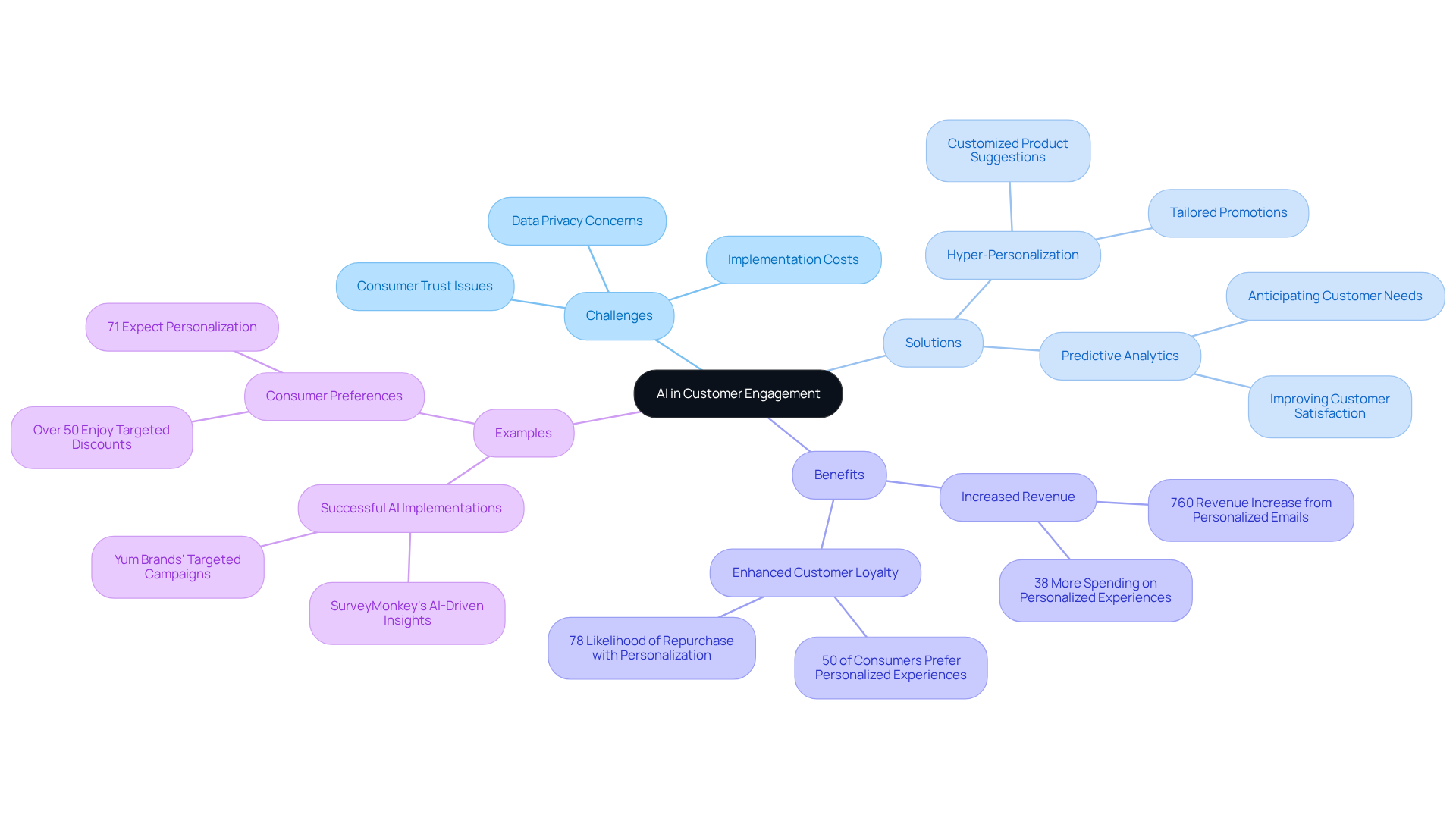
User-Generated Content: Harnessing Authenticity to Build Brand Trust
User-created content (UGC) has emerged as a vital element in today’s promotional strategies, reflecting important digital marketing industry trends that enable companies to genuinely connect with the voices of their audience. However, many businesses struggle to create authentic engagements, leaving customers feeling unheard. This disconnection can lead to a lack of trust and community.
By fostering an environment where customers feel encouraged to share their experiences and insights, companies can cultivate a sense of belonging and trust. This authenticity not only enhances engagement but also serves as powerful social proof, significantly influencing potential buyers' decisions. In fact, 82% of shoppers are more inclined to purchase from companies that incorporate UGC into their marketing strategies.
As the demand for genuine interactions grows, companies that effectively harness UGC—like RNO1’s Ryde initiative, which includes national UGC programs and creative tactics such as gamification and influencer onboarding—are poised to enhance loyalty and customer retention, aligning with digital marketing industry trends.
The impact of UGC on product trust is profound; 93% of marketers assert that UGC surpasses traditional branded content, underscoring its effectiveness in building stronger connections with customers. Yet, 63% of customers expect businesses to address misleading UGC, highlighting the crucial need to maintain authenticity in UGC strategies.
Looking ahead to 2025, companies that prioritize UGC and successfully expand their omnichannel ambassador programs are likely to see a remarkable improvement in their overall image and customer loyalty. Together, let’s embrace the power of authentic voices and create a more connected community.
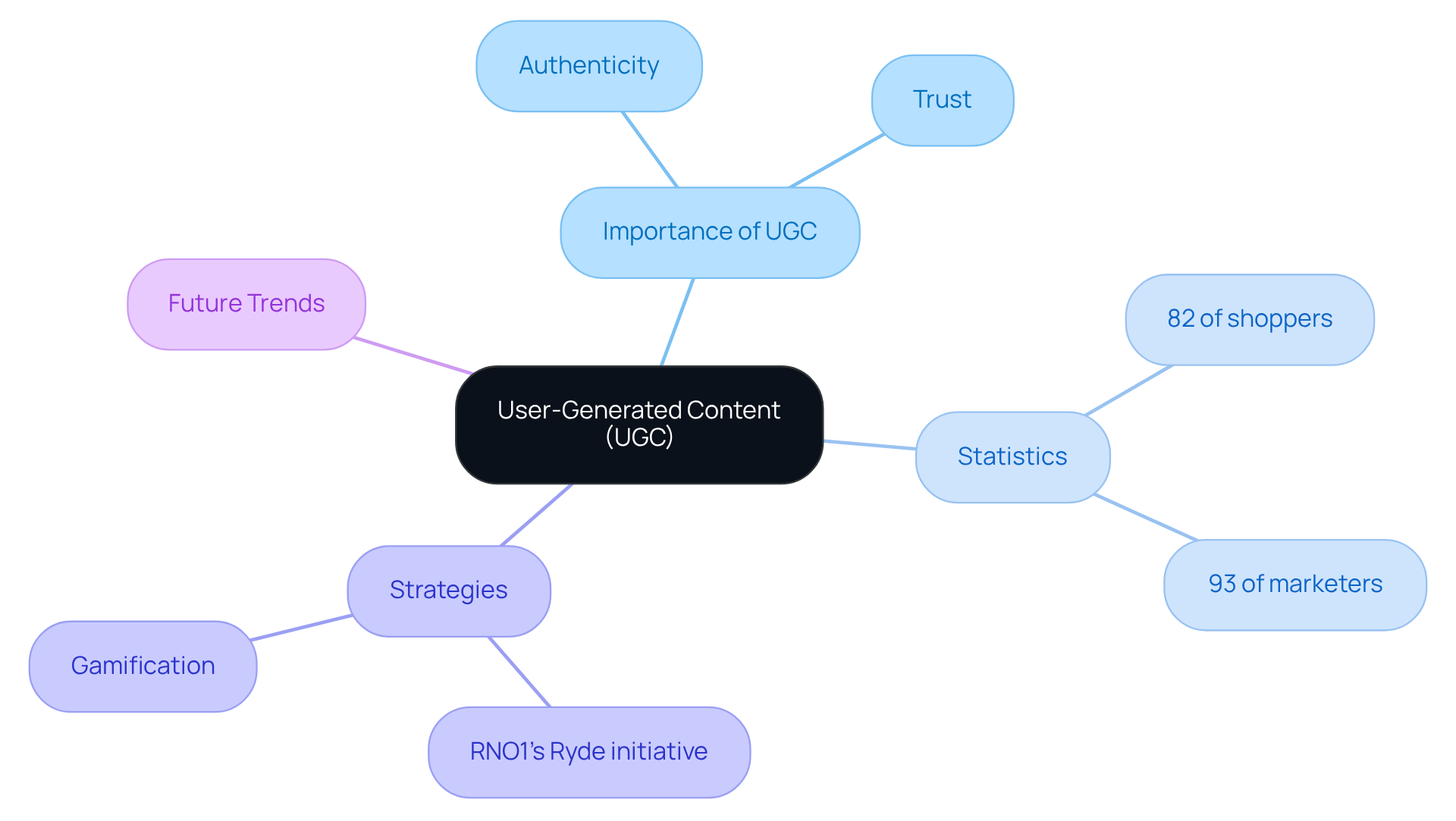
Hyper-Personalization: Meeting Consumer Expectations with Tailored Marketing
In today’s fast-paced world, many companies struggle to connect with their customers on a personal level. Traditional personalization often falls short, leaving customers feeling overlooked and unappreciated. This gap can lead to frustration, as individuals increasingly seek meaningful interactions with brands. Hyper-personalization emerges as a nurturing solution, enhancing traditional methods by utilizing real-time data and AI to craft messages that resonate deeply with each customer. By anticipating customer needs and preferences, brands can create experiences that are not just relevant but also captivating.
At RNO1, we understand that effectively assessing customer behavior and feedback is crucial for aligning with audience expectations. With 71% of individuals now anticipating personalized interactions, it’s clear that brands embracing hyper-personalization are on the path to achieving significantly greater engagement and conversion rates. Consider a North American retailer that implemented hyper-targeted product recommendations; they saw a remarkable 35% increase in sales, illustrating the tangible benefits of this strategy.
Moreover, 80% of companies report that when experiences are customized, customers tend to spend, on average, 38% more. This highlights the importance of personalization in fostering customer loyalty and satisfaction. Looking ahead to 2025, incorporating real-time information into personalized strategies will be essential to adapt to digital marketing industry trends. This approach enables brands to deliver timely and contextually appropriate messages, nurturing deeper relationships with clients.
At RNO1, our cross-functional teams are dedicated to helping you navigate this landscape. We are hyper-focused on delivering results through collaborative strategies that ensure our partners achieve measurable success. We invite you to share your experiences with personalization; together, we can create a future where every customer feels valued and understood.
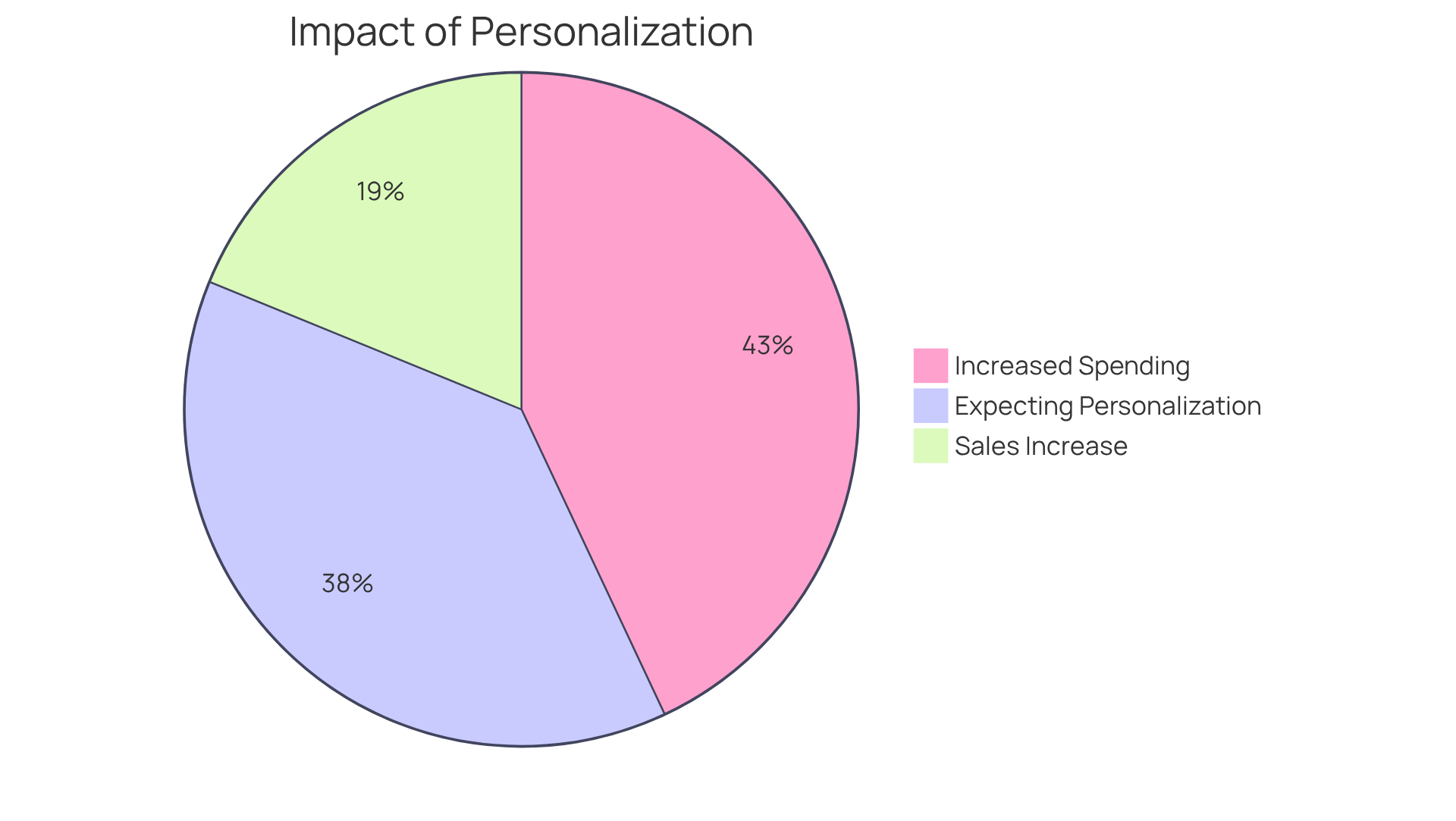
Short-Form Video Content: Capturing Attention in a Fast-Paced Digital World
In today's fast-paced digital landscape, many companies struggle to capture consumer attention effectively. Short-form video content has emerged as a pivotal solution, offering a way to connect with audiences in a meaningful way. Platforms like TikTok and Instagram Reels have transformed communication, enabling businesses to deliver messages swiftly and engagingly. As we look ahead to 2025, those who embrace short-form videos, alongside innovative omnichannel ambassador programs and luxury funnel messaging tailored for e-commerce communities, can significantly enhance their visibility and foster deeper connections with their audiences by aligning with digital marketing industry trends.
Imagine the possibilities: with 91% of businesses utilizing video as a marketing tool in 2023, integrating short-form content into marketing strategies is not just beneficial; it’s essential for maintaining relevance and driving engagement. To create impactful short-form videos, companies should focus on concise storytelling that resonates with viewers. Did you know that videos shorter than 1 minute achieve an impressive engagement rate of 50%? This aligns perfectly with the limited attention spans of modern consumers. By incorporating engaging visuals, clear messaging, and a strong call to action, businesses can amplify the effectiveness of their videos.
Moreover, the power of user-generated content and influencer collaborations cannot be overlooked. These strategies improve authenticity and reach, as user-generated content builds social proof and trust. The growth of influencer and ambassador programs, particularly those that connect with global influencers, can further enhance the impact of short-form video campaigns and support national user-generated content initiatives.
The influence of TikTok and Instagram Reels on marketing strategies is profound. In 2025, 29% of social users expect to make purchases influenced by content viewed on Instagram, highlighting the platforms' crucial role in enhancing product visibility. Successful companies are already capitalizing on digital marketing industry trends by using short-form videos to showcase products, share behind-the-scenes content, and engage with their audiences in real-time. By weaving in influencer techniques and user-created content, businesses can craft more engaging stories that resonate with their audiences. As video consumption continues to rise, those who adapt to digital marketing industry trends will not only capture attention but also drive conversions, paving the way for success in an ever-evolving market.
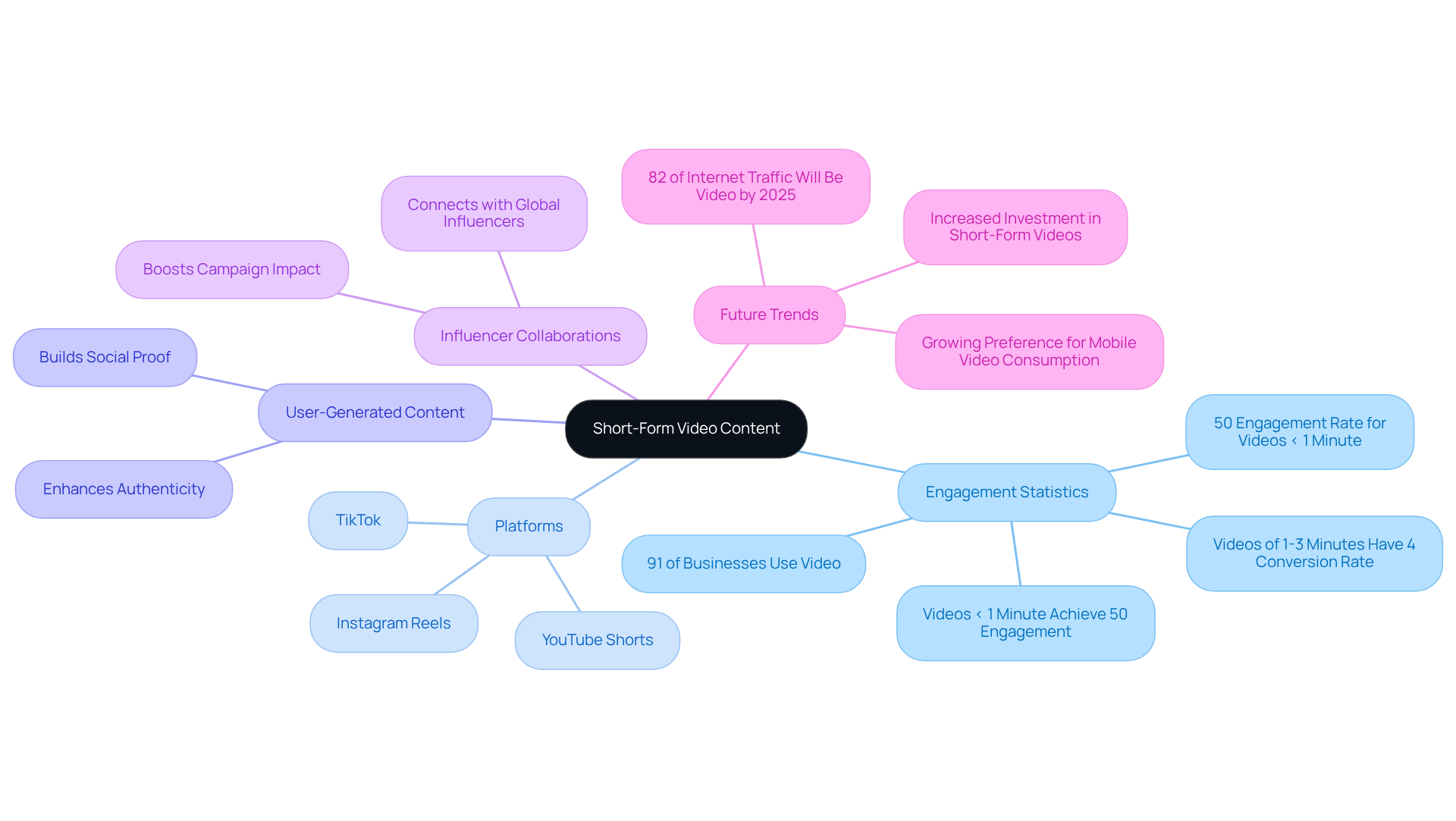
Sustainability: Integrating Ethical Practices into Digital Marketing Strategies
Sustainability has emerged as a vital factor influencing buyer decisions, prompting brands to weave ethical practices into their promotional strategies. This shift towards sustainability not only enhances a company's reputation but also attracts a growing community of environmentally conscious individuals. However, the journey towards sustainable marketing requires transparent communication about sourcing, production methods, and corporate social responsibility initiatives. Brands that genuinely express their commitment to sustainability are more likely to forge deeper connections with their audience, fostering loyalty and trust.
Many shoppers today are willing to pay more for locally sourced products, with recent trends showing that:
- 80% of consumers prefer companies that prioritize ethical practices.
- 69% are inclined to make repeat purchases from companies that utilize eco-friendly packaging.
As products marketed on sustainability continue to grow at a rate 2.7 times faster than traditional alternatives, it becomes evident that individuals increasingly support brands that align with their values. Furthermore, 68% of global buyers are ready to halve their consumption to mitigate environmental harm, underscoring a significant commitment to sustainability.
Looking ahead to 2025, companies that effectively communicate their sustainability efforts will not only distinguish themselves in a competitive market but also nurture long-term loyalty among consumers who prioritize ethical considerations in their purchasing decisions. Yet, it's important to recognize that:
- 55% of shoppers remain skeptical about sustainability claims.
- 84% would abandon a brand due to insufficient environmental practices.
Therefore, authenticity and transparency in sustainability messaging are essential for cultivating trust and loyalty.
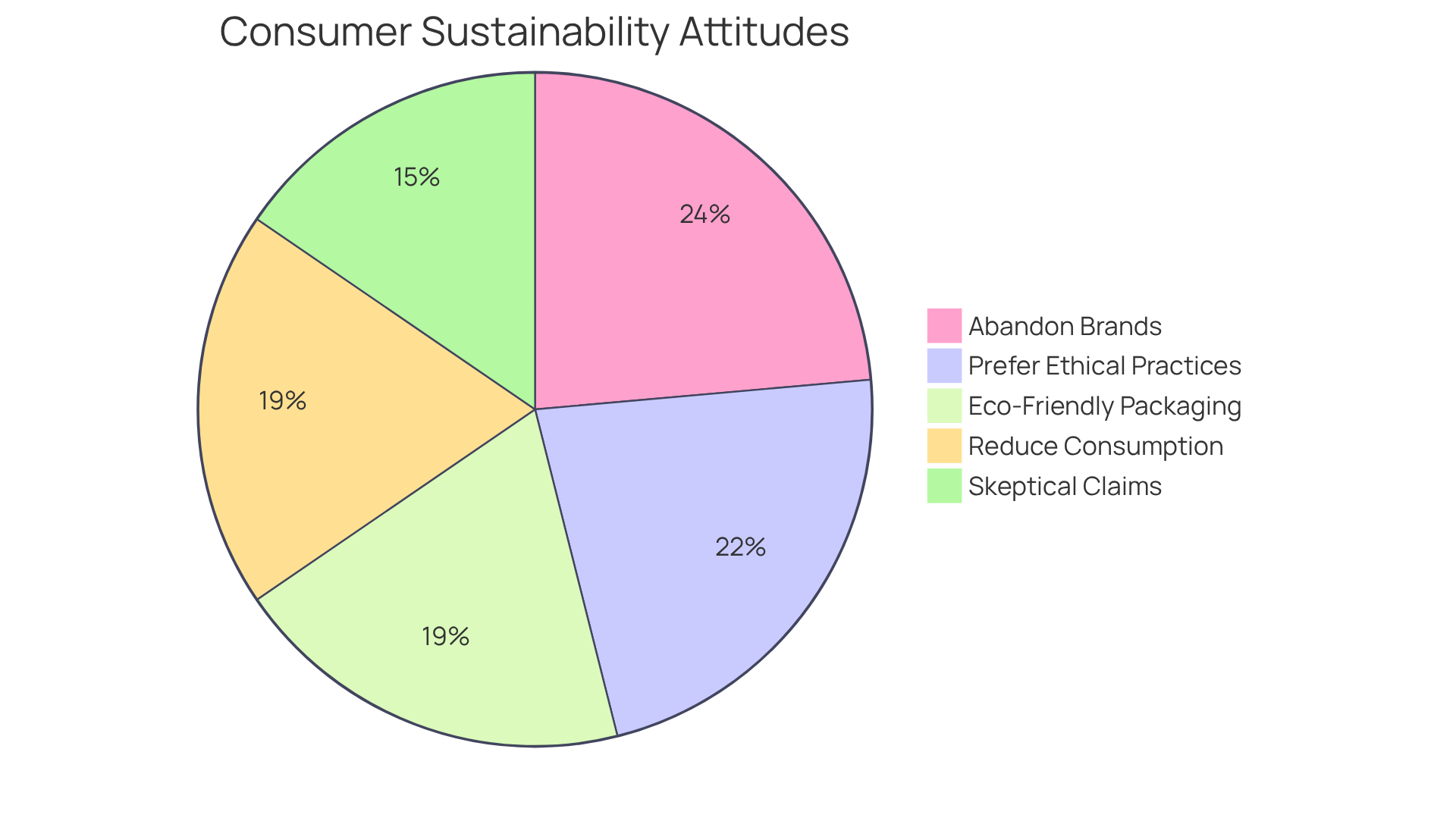
Social Commerce: Leveraging Social Media for Direct Sales Opportunities
Social commerce is reshaping the retail landscape, presenting a challenge for brands as they strive to connect with consumers directly through social media platforms. Many shoppers today seek seamless experiences, wanting to discover and purchase products without leaving their favorite apps. This desire can create a sense of frustration when brands fail to meet these expectations.
In 2025, social commerce is projected to account for a significant share of retail sales, with U.S. social commerce sales expected to reach $100.99 billion by 2026, reflecting a robust growth trajectory. Brands that effectively integrate social commerce into their marketing strategies can tap into the vast audiences on platforms like Instagram and Facebook, aligning with digital marketing industry trends, where 12% of all digital buyers in the U.S. engage in shopping.
Successful brands are already leveraging these platforms to enhance customer engagement and drive sales. For instance, TikTok has emerged as a powerful tool for reaching younger audiences, with 43.8% of its U.S. users making purchases through TikTok Shop in 2024.
As social commerce continues to evolve, clarity about processes such as refunds and returns will be essential for establishing trust with buyers, who increasingly anticipate customized interactions and personalized shopping experiences. By embracing social commerce and adapting to digital marketing industry trends, companies can not only enhance their sales but also cultivate deeper connections with their customers, positioning themselves for success in the competitive digital marketplace.
Together, we can navigate this transformative journey, ensuring that every customer feels valued and understood.

Interactive Content: Enhancing Engagement Through Dynamic Experiences
In today’s digital landscape, many companies face the challenge of engaging their audiences effectively. Interactive content, such as quizzes, polls, and interactive videos, emerges as a powerful solution, swiftly becoming a cornerstone of digital marketing. By encouraging active participation, businesses create memorable experiences that resonate deeply with their audience. This engagement goes beyond surface-level interaction; in fact, interactive content generates 52.6% more involvement than static alternatives, with users dedicating an average of 13 minutes to engaging with these formats compared to just 8.5 minutes for traditional content.
The strategic use of quizzes and polls can profoundly influence purchasing behavior. Companies that embrace these tools often see a significant rise in user engagement and valuable data collection, which can inform future marketing strategies. As we look ahead to 2025, the integration of interactive content will be essential for companies striving to stand out in a saturated market, fostering deeper connections and loyalty among consumers.
There are numerous success stories to draw inspiration from. For instance, BuzzFeed has effectively utilized quizzes to enhance engagement and gather important user information, resulting in considerable visibility. With a staggering 96.1 million total visits, quizzes serve as the primary driver of engagement for BuzzFeed. Similarly, the NBA’s use of Twitter polls to engage fans illustrates how interactive features can boost audience participation and loyalty. A recent Twitter poll on the @NBAonTNT account garnered over 70,000 votes, showcasing the success of their engagement strategy. As advertisers increasingly recognize the potential of interactive content, it is projected that 14% of promotional budgets will be allocated to these dynamic experiences, reflecting a strong belief in their ROI potential.
In conclusion, the shift towards interactive content is not just a passing trend; it represents a crucial evolution in digital marketing industry trends for 2025. By embracing engaging and insightful experiences, companies can forge lasting connections with their audiences, nurturing loyalty and understanding in an ever-changing landscape.
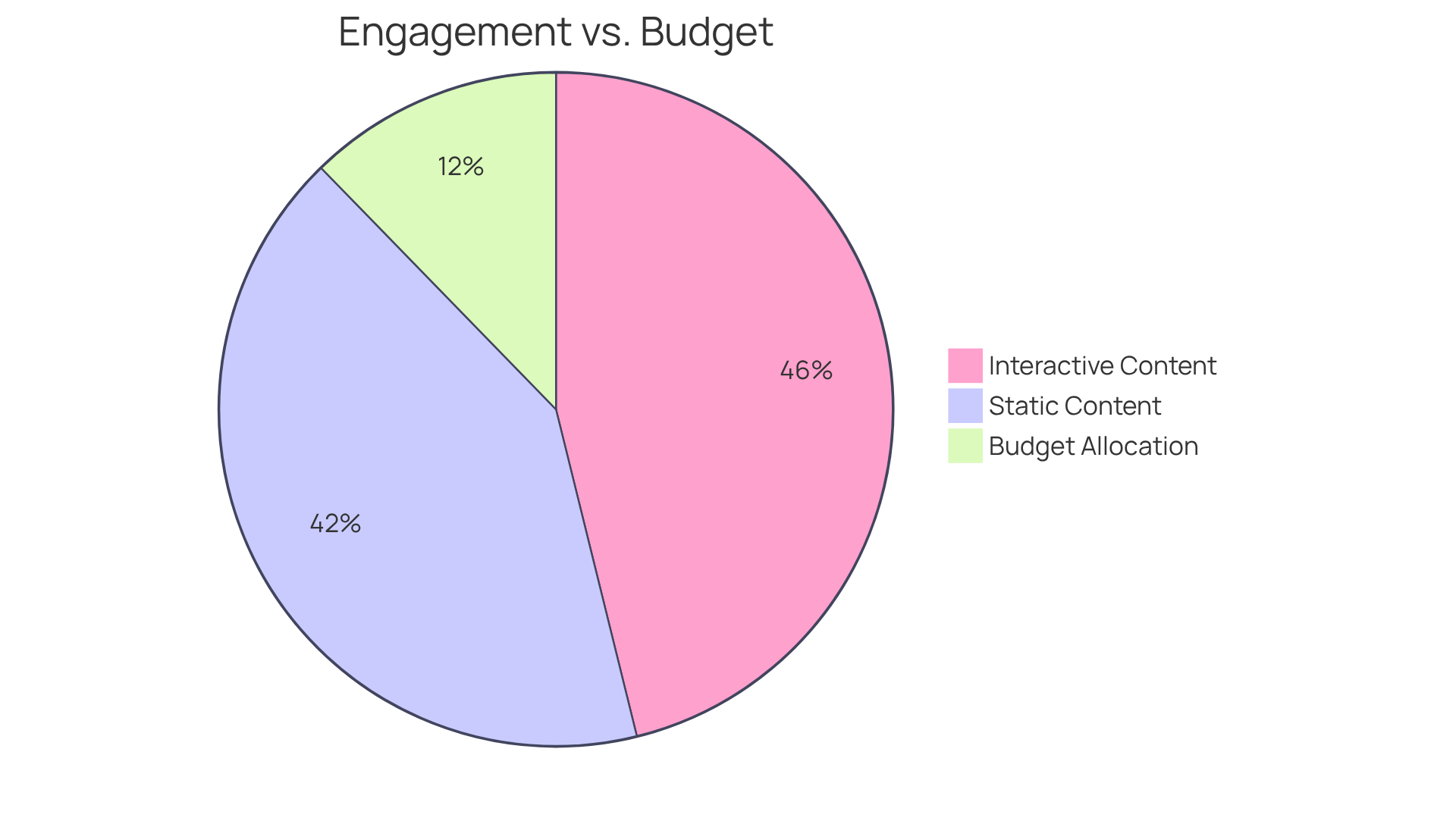
Voice Search Optimization: Adapting to the Future of Search Behavior
Voice search is reshaping how users interact with search engines, prompting brands to rethink their strategies in light of digital marketing industry trends. As reliance on voice-activated devices grows, it becomes increasingly vital for companies to optimize their content for voice search. This means focusing on conversational keywords and providing concise, relevant answers to common questions. Such strategic adjustments not only enhance visibility in search results but also improve the overall user experience.
Brands that prioritize voice search optimization are poised to connect with a growing audience that favors voice interactions. In fact, 40% of adults use voice search daily, highlighting this shift. Additionally, local searches are on the rise, with 76% of voice searches being location-based. This reality underscores the importance for businesses to ensure their Google My Business listings are both complete and accurate.
As Dhana Suryaa wisely points out, 'Businesses with complete Google My Business listings are 70% more likely to attract location-based inquiries via voice search.' Furthermore, 88% of individuals who conduct a local search on their smartphone visit or call a store within a day, reinforcing the urgency for businesses to enhance their local search optimization.
By embracing digital marketing industry trends, brands can effectively position themselves within the competitive landscape of 2025 and beyond, ensuring they remain relevant and accessible to their audience.
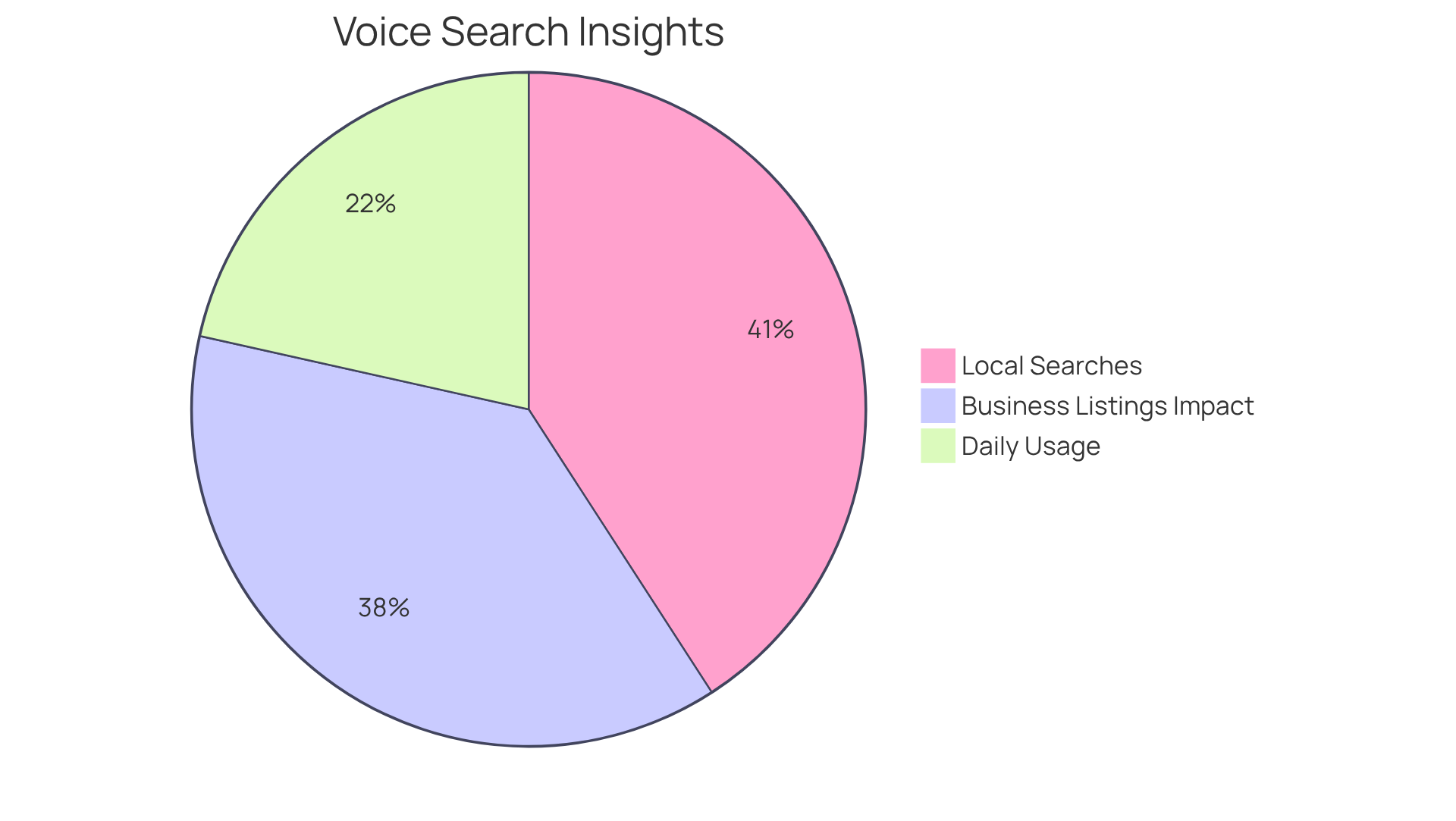
Augmented Reality: Creating Immersive Experiences to Engage Consumers
In today's fast-paced world, many consumers struggle with uncertainty when making purchase decisions. This challenge can lead to frustration and hesitation, especially when they can't visualize how a product will fit into their lives. Augmented reality (AR) offers a nurturing solution by crafting immersive experiences that seamlessly blend the digital and physical realms. Imagine being able to visualize products right in your own environment—this is where AR shines, significantly enhancing the shopping experience and boosting confidence in choices. Companies like L’Oréal and Nike have embraced this technology, witnessing remarkable increases in app downloads and sales as a result.
As we look to the future, AR technology is becoming increasingly accessible. User adoption in AR hardware is expected to grow from just 0.3% in 2023 to 1.3% by 2027. For businesses willing to embrace this innovation, the potential to stand out in a crowded marketplace is immense. Unique, interactive experiences foster deeper connections with audiences, driving engagement and sales.
By 2025, AR is anticipated to be a central pillar of experiential commerce, with 75% of shoppers expecting AR to be a regular part of their shopping journey. This trend underscores the importance of AR in shaping buyer preferences and behaviors, making it an essential tool for brands striving for success in light of digital marketing industry trends. Notably, 40% of consumers express a willingness to pay more for AR experiences, highlighting the value they place on these enriched shopping interactions. Together, we can navigate this transformative journey, ensuring that brands not only meet but exceed the expectations of their customers.
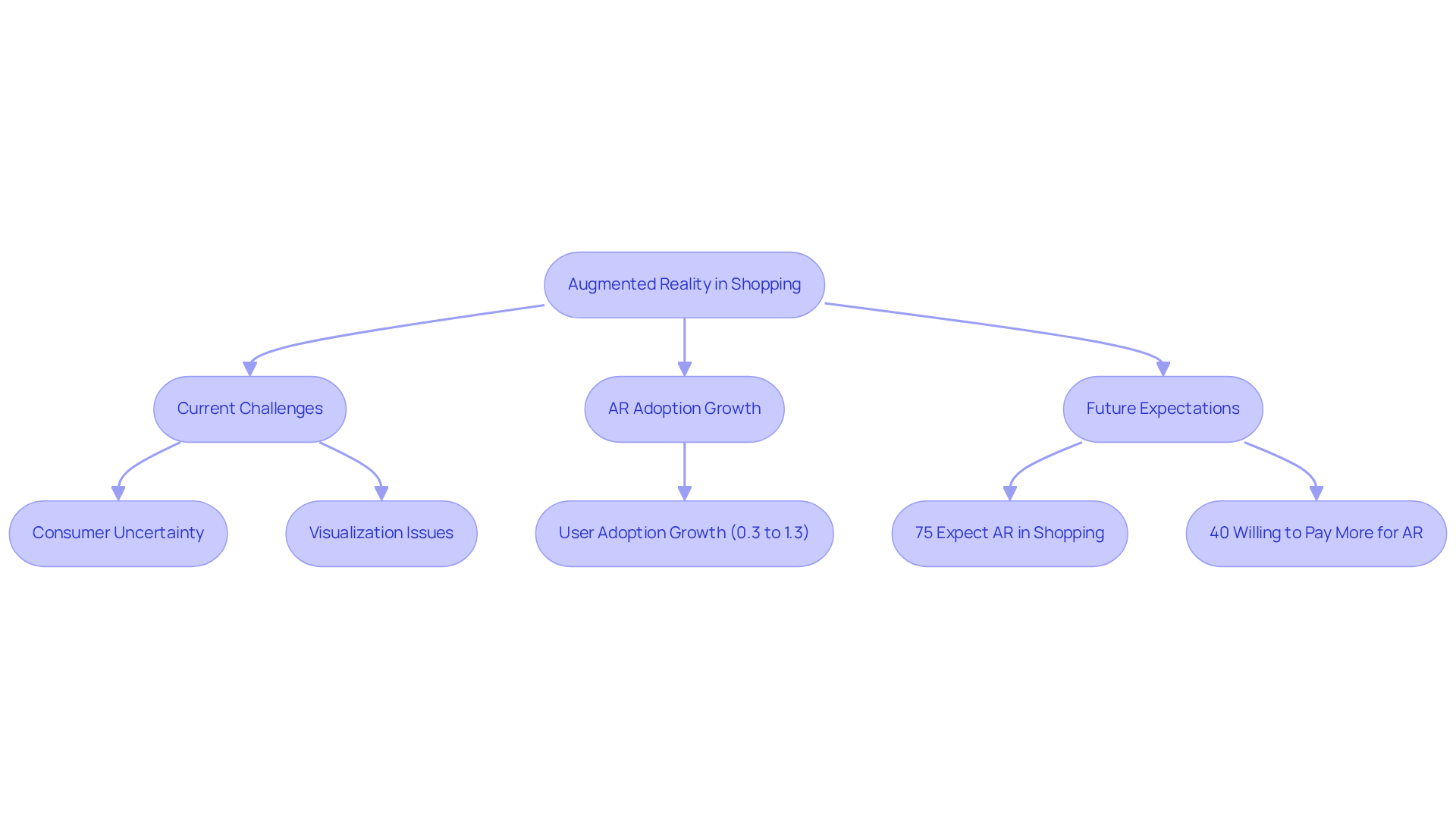
Conclusion
As we look toward 2025, the landscape of digital marketing reveals itself as a rapidly changing environment, presenting challenges that can feel overwhelming for many businesses. The need for innovative branding, personalized customer experiences, and authentic connections has never been more crucial. It’s essential for organizations to adapt to these shifts if they wish to remain competitive in an intricate digital terrain. Embracing strategies that prioritize engagement and authenticity can seem daunting, but it is vital for success.
Consider the implications of advanced technologies like AI and augmented reality. These tools not only enhance personalization but also create immersive experiences that resonate with consumers. User-generated content stands out as a pivotal resource for building trust, while hyper-personalization and interactive content can foster deeper connections with your audience. Moreover, the rise of social commerce and sustainability practices reflects a shift in consumer expectations, urging brands to align their strategies with ethical considerations and seamless shopping experiences.
The future of digital marketing is not just about adapting; it’s about seizing exciting opportunities. Brands that are willing to innovate and connect meaningfully with their audiences will find that authenticity, personalization, and ethical practices are not just buzzwords, but essential pillars for cultivating lasting relationships with customers. As you navigate this journey, remember that being proactive and responsive will empower your business to thrive in an ever-evolving digital landscape. Together, let’s embrace these trends and support one another in creating a more connected and compassionate marketing world.
Frequently Asked Questions
What challenges do tech startup founders face in the digital world?
Tech startup founders often struggle to connect authentically with their audience, leading to feelings of frustration and isolation due to the complexity of the digital landscape.
How does RNO1 help companies in the digital marketing space?
RNO1 creates transformative digital experiences that connect with people, elevates brand identity, enhances customer engagement, and employs advanced UX design principles to help companies navigate the digital terrain.
What subscription models does RNO1 offer for ongoing support?
RNO1 offers subscription models like Revolve and Retrn, which provide ongoing support to help companies adapt and innovate in real-time.
Why is personalization important in digital marketing?
Personalization fosters deeper customer connections, with 94% of marketers believing that tailored experiences are vital for engaging consumers effectively.
How does Artificial Intelligence (AI) transform customer engagement?
AI transforms customer engagement through hyper-personalization and predictive analytics, allowing brands to tailor promotional messages and product suggestions to individual preferences.
What impact does personalized marketing have on revenue?
Personalized experiences can lead to a 760% increase in revenue from email campaigns alone.
How do brands benefit from integrating AI into their promotional strategies?
Brands that embrace AI-driven strategies can better anticipate customer needs, which nurtures satisfaction and loyalty, helping them maintain a competitive edge.
What role does User-Generated Content (UGC) play in modern marketing?
UGC is crucial for creating authentic engagements and building trust, as it reflects the voices of the audience and enhances customer connections.
What percentage of shoppers prefer companies that use UGC in their marketing?
82% of shoppers are more inclined to purchase from companies that incorporate UGC into their marketing strategies.
What should companies be aware of regarding misleading UGC?
63% of customers expect businesses to address misleading UGC, highlighting the need for authenticity in UGC strategies.
How can companies enhance loyalty and customer retention through UGC?
By fostering an environment that encourages customers to share their experiences and insights, companies can cultivate trust and a sense of belonging, which enhances loyalty and retention.
What is the expected trend for companies prioritizing UGC by 2025?
Companies that prioritize UGC and expand their omnichannel ambassador programs are likely to see significant improvements in their overall image and customer loyalty.




